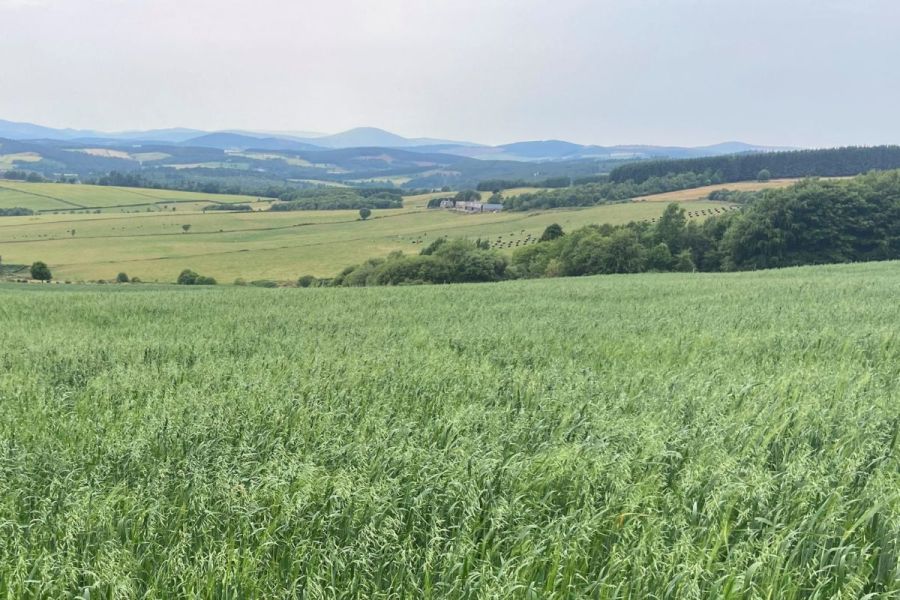Cereal wholecrop can provide mixed farmers with multiple benefits but it’s expensive to grow if it’s not serving several purposes, especially when commodity prices are high. CPM speaks to several consultants and farmers to explore their experience with it.
The cereal crop effectively nurses the grass and helps maintain moisture at dry times.
By Melanie Jenkins
Cereal wholecrop can be used by mixed farmers to boost the protein content in silage, to establish a grass ley or to combat a weed prone cereal crop, explains independent consultant, Liz Genever. “The principle is to understand your objective rather than growing it for the sake of it.”

Cereal wholecrop can be used to boost the protein content in silage, to establish a grass ley or to combat weeds.
Liz suggests growers choose the right mix for their aims and drill at the appropriate seed rate as there can be an adjustment from a standard cereal, as well as noting the timing of when it’ll need cutting. “And target the dry matter (DM) for what you’re trying to achieve,” she adds.
The main challenge on mixed farms is fitting wholecrop into the rotation, she says. “It’s not a true break crop, so might be better suited to tricky fields or environmentally sensitive areas.”
Cereal wholecrop could also be an option for those who struggle to grow maize silage on marginal land. “It won’t deliver the same product but it’s a way of producing something on marginal land which you might not be able to get onto when maize needs cutting. From a sustainability perspective, cereal wholecrop ticks a lot of boxes and it doesn’t cause the soil issues like maize does.”
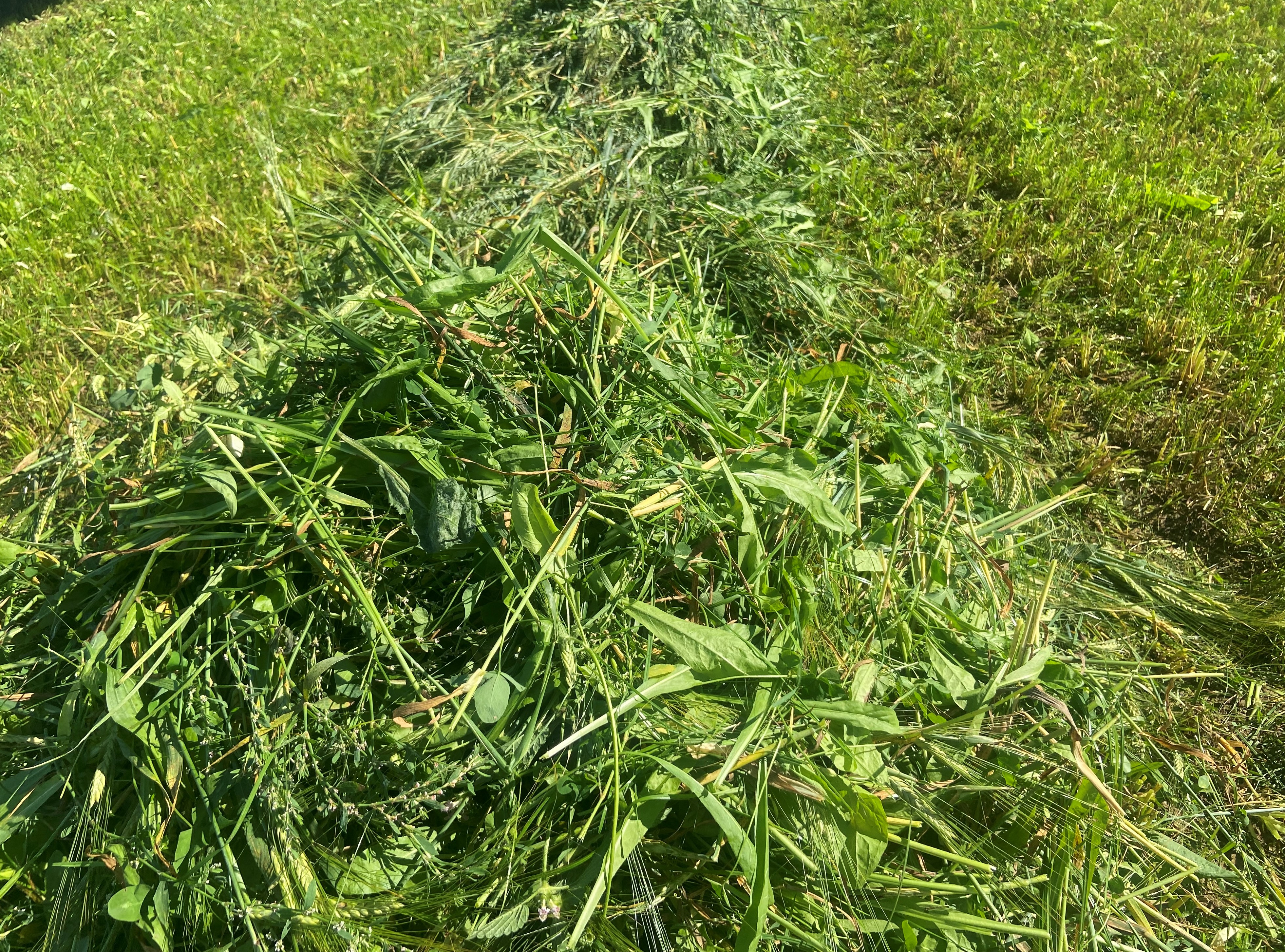
Cereal wholecrop could be an option for those who struggle to grow maize silage.
Some growers might also consider including vetches or peas in their wholecrop, says Liz. “These are interesting from a nitrogen perspective. And because these are harvested green, there could be stubble grazing available for stock or growers could put in stubble turnips or brassicas, depending on their rotation.”
According to independent consultant, Clyde Jones, in a good year growers can get cereal wholecrop planted in February or March and could get the crop off by May. “It’s like growing a cereal but isn’t a cheap thing to do. However, it’s good way to establish a grass or herbal ley.”
The general advice is to not bale wholecrop as rats love it, says Liz. “There can be quite a lot of damage and losses this way.”
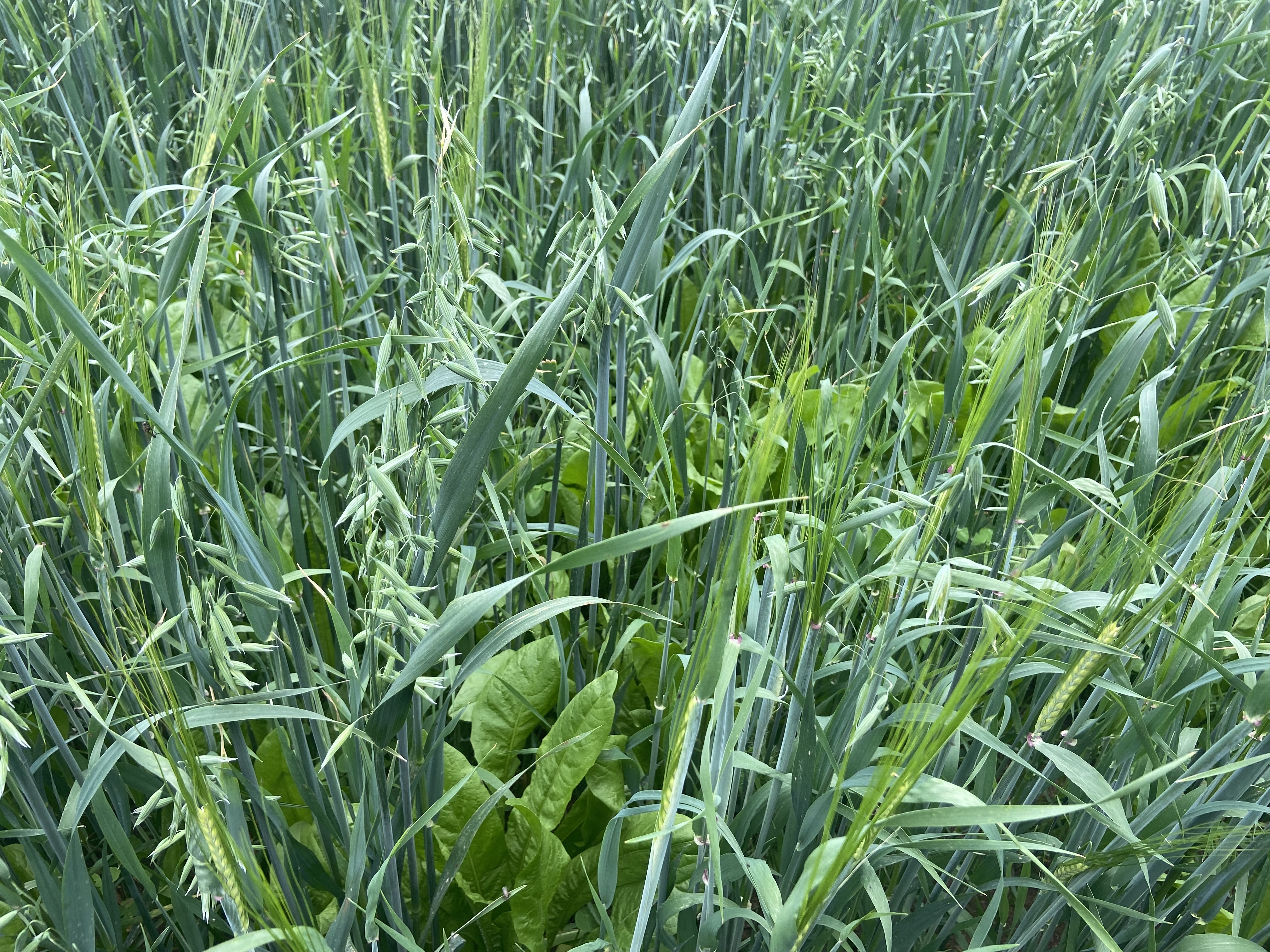
In a good year growers can get cereal wholecrop planted in February or March and could get the crop off by May.
But if growers are going to wrap it up, Clyde recommends cutting it pre-grain emergence as this is less likely to attract rats. “Cutting it green means it can turn out quite ‘strawy’ compared with most grasses,” he says.
Those putting wholecrop in the clamp will likely leave it later before cutting and once it’s in the clamp, some people will use an inoculant to try to stabilise it, says Liz. “Think about how you’re going to analyse it because standard analysis won’t work due to the variation in having a mix of species. Wet chemistry will provide a more accurate energy and protein reading.”
Clyde also suggests using a block cutter to seal the wholecrop in the clamp if the DM content is high. “There could be secondary fermentation and moulding on the face of the clamp otherwise.”
The newcomer
Based near Inverurie in Aberdeenshire, Duncan Morrison has recently cut his first ever cereal wholecrop. His herd of around 220 rotationally grazed cows are spread across one upland unit and two low ground units, covering 223ha.
“We run a mixture of pedigree Aberdeen Angus, Stablisers and commercial crosses,” he explains. “We’re very grass-based and low input, with the idea of being as efficient as possible to reduce our fertiliser use and costs. Because we’re low input, we focus on clover and putting lots of sprays or fertiliser on doesn’t work in harmony with that.”
Over the past few years Duncan has been trying to establish new grass swards. “We’ve more or less reseeded the whole farm, with mixed success. All of our breeding cows are kept outdoors throughout the winter and a lot of the time they’re on forage crops, like kale, and deferred grazing and we put new grass in after that. But we’ve had issues in establishing the grass as weeds have been taking over and the dilemma has been that if we take out docks and thistles with sprays, this kills the clover as well.”
This predicament is what led him down the route of arable silage. Duncan was first attracted to the idea of wholecrop from speaking to other farmers and from seeing tweets on Twitter. “We aren’t organic but it’s a route we want to head down eventually, and arable wholecrop is something I’ve seen organic farmers use to establish grass.
“Another part of the idea behind the arable silage was to try to increase the diversity in the sward –getting chicory and plantain in there – and as a way of managing drought. We couldn’t establish this kind of ley and take out the weeds without undersowing it with a wholecrop.”
And as Duncan’s finishing a good amount of his stock, the wholecrop will go to them as a direct feed to help reduce his use of concentrates. “So in theory, growing a wholecrop should be a win-win,” he says.
“This has been our first year of growing it and it looks to have gone pretty well for us so far. The only thing I don’t know is whether the analysis works out that well, but if it does then I can see us using wholecrop as the way we establish grass from now on.”
Duncan decided to grow three different mixes to achieve slightly different ends. The first was purely oats, which were undersown with a herbal ley on his upland holding. “The cows on this unit don’t need really high energy feed so we mowed the crop at an early stage when it was still quite leafy and more like a grass crop. This worked out really well as we don’t have our own combine and didn’t need arable silage for these cows.”
He also grew an oat, barley and pea crop which was undersown with a regular grass mix. “This was put through the forager with a wholecrop header and then put in the clamp. It will feed our finishing stock,” explains Duncan.
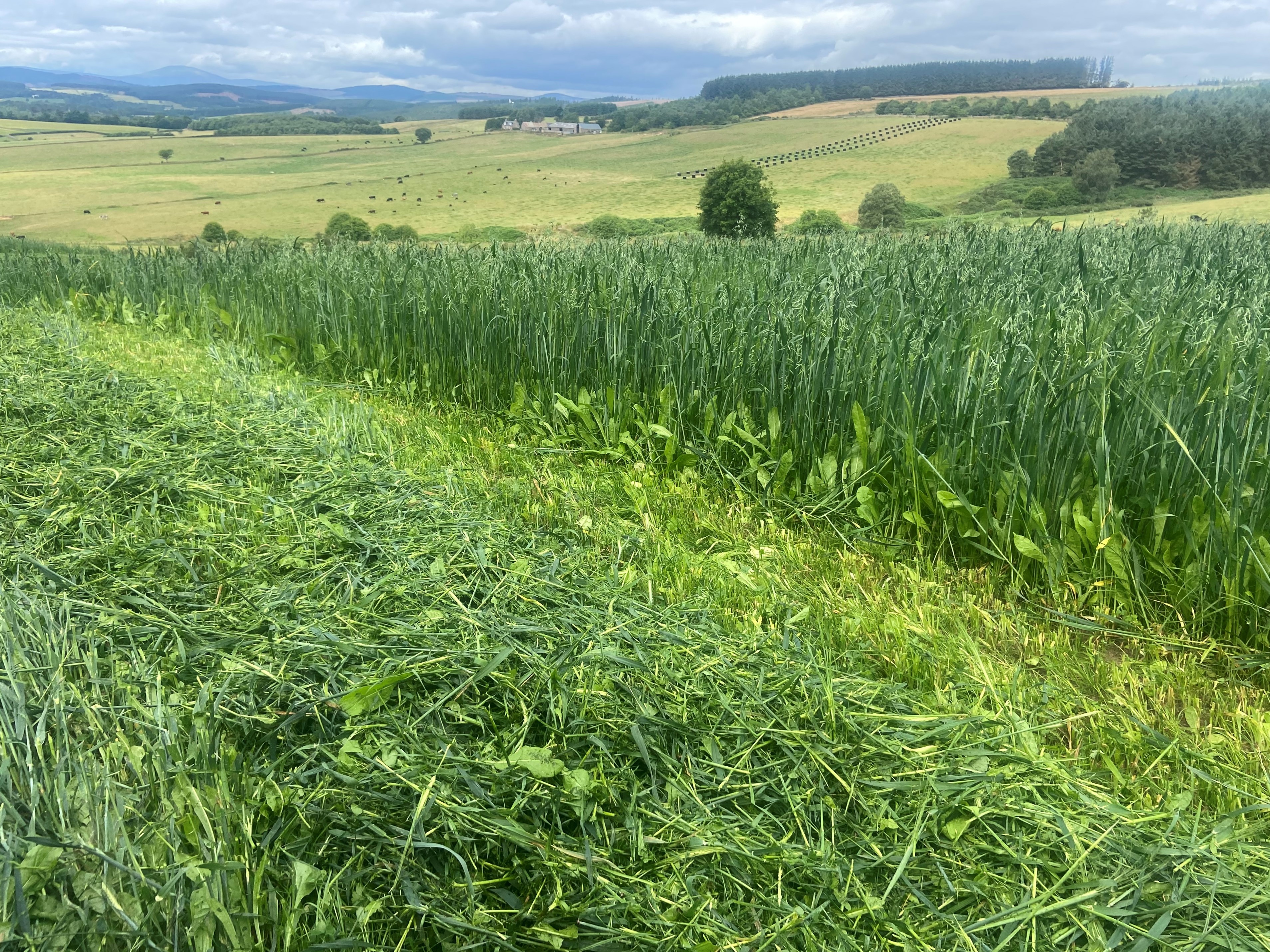
Having peas in a wholecrop mix can help release nitrogen for undersown grass.
“The third mix was oats, barley and peas but undersown with a herbal ley, which consisted of chicory, plantain, red and white clover. This will be fed to our pedigree stock.”
According to Duncan, establishing the mixes was pretty easy. “We were slightly concerned about how dry our ground was, but it was sown 18 May and we cut it all in mid-August.”
Duncan ploughed any fields where cows had been outwintered to get rid of ruts and drilled the wholecrop with a Horsch disc drill. “We drilled 124kg/ha of wholecrop seed and then herbal leys were broadcast at 20kg/ha and grass mixes at 35kg/ha.”
Duncan is now pretty keen to do the same again and may even extend the area of cereal wholecrop he grows. “I also have in mind to combine wheat, barley and peas in one mixture after seeing another farmer doing this recently. I think it might work well for us as more targeted cereal use, rather than as a complete forage.”
The veteran

Rob Halliday grows wholecrop in south-east Cornwall to finish his cattle on.
At the opposite end of the country, in south-east Cornwall, Rob Halliday has been growing wholecrop since he started out farming. He runs a herd of 370 predominantly Aberdeen Angus and South Devon cattle, plus around 150 sheep on 162ha of tenanted and share-farmed land.
Rob aims to finish everything by 24 months but because his original system was entirely grass, he didn’t have anything to finish the cattle on. “We found we wanted something other than straight grass to add to the finishing ration and pea and barley wholecrop provides a good mix of protein and starch.”
Growing wholecrop fell naturally into Rob’s system as the undersown cereals were good for establishing the next grass crop and for weed suppression.
“Wholecrop is a cost-effective option as the only additional cost is the seed itself and one pass of the drill. Every other cost is covered by the grass rotation, plus the cereal crop effectively nurses the grass and helps maintain moisture at dry times,” he explains.
Rob plants 185kg/ha of a barley and pea mix and tends to use combining peas as these mature in line with the barley. “They seem to come fit at a better time than forage peas do,” he says.
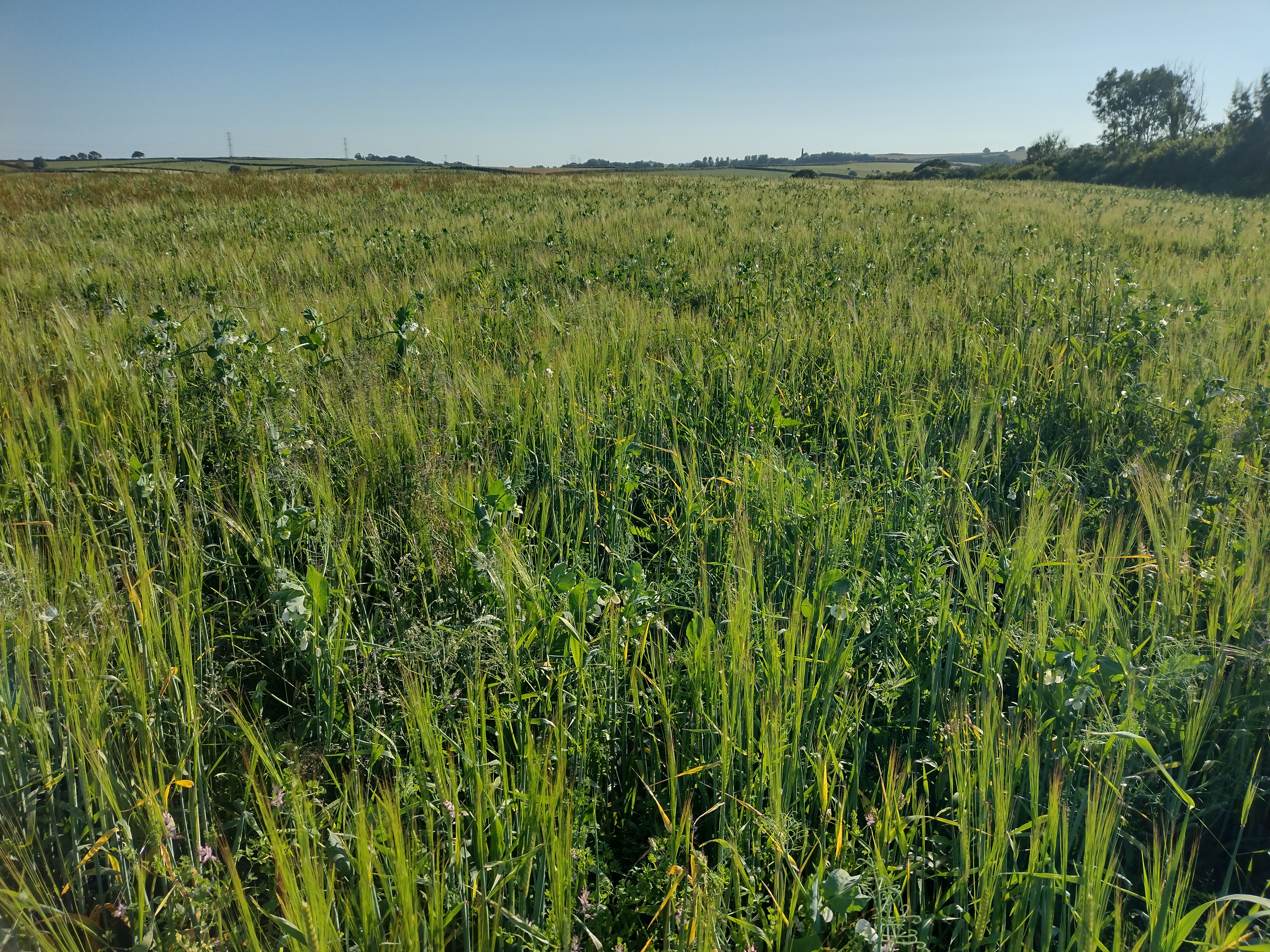
Agronomy can be difficult with combination crops, especially if these are undersown with herbal leys
All of his wholecrop is undersown with perennial ryegrass and clover or with herbal leys. He usually sows between 20 and 25 April as he doesn’t want the wholecrop going into a cold seed bed.
This year he changed his cultivation practice from ploughing to a Teagle Vario disc cultivator. “We grow stubble turnips for cows to graze, so subsoil and disc in a single pass to lift any compaction and then a contractor drills the wholecrop with an Amazone combination drill.
Rob advises growers to know their potential weed burden before they start sowing wholecrop. “When we were ploughing, I think we buried a lot of our problems but now we’re cultivating we need to be more on top of our stale seed beds and spraying off pre-drilling – particularly with docks,” explains Rob.
“I don’t like to use glyphosate but might have to spray the docks off as we want to make sure the fields are clean before planting herbal leys.”
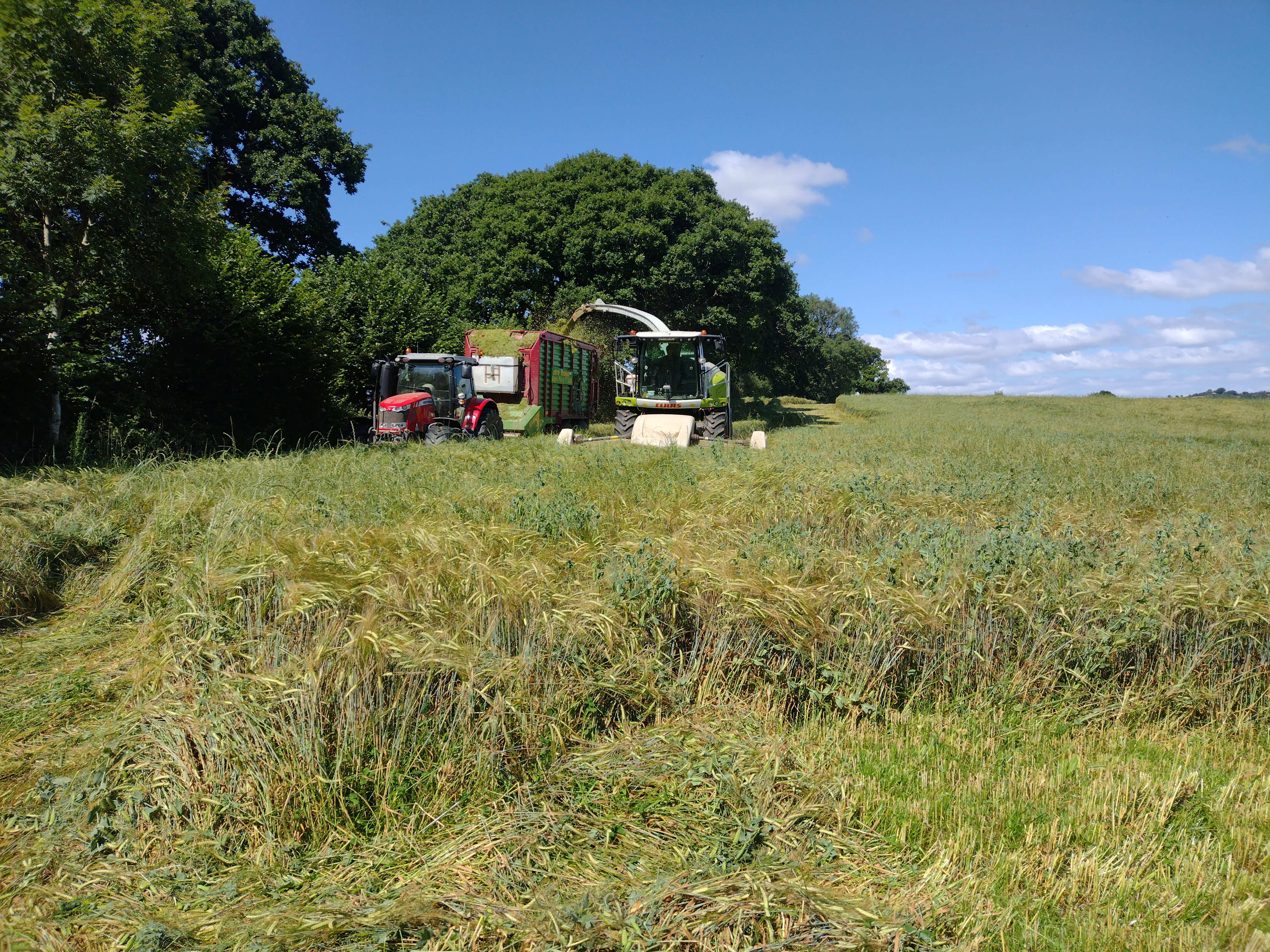
Being aware of the potential weed burden before sowing a wholecrop is important.
He applies a small amount of fertiliser to kick things off but once the peas and barley have been cut, the pea nodules senesce, releasing N for the grass crop. “This makes it a relatively low input crop for the output.”
Rob admits that any form of agronomy is difficult with combination crops, especially if these are undersown with herbal leys. “There’s just too much diversity.”
Although he has cut the crop with a forage harvester before, he direct cut it this year. “Dropping it on the floor, then raking and baling can cause mechanical damage, so we direct headed it with a forager this year to make sure we got everything.”
Last year Rob grew peas and barley which he combined for the first time. “I didn’t undersow this but grew it as a straight combinable crop. I crimped it and used it as a creep feed, which worked really well. This was interesting as it gave us the flexibility of feeding in the field or putting it in the TMR as an autumn ration.”
One thing Rob notes about wholecrop is that it doesn’t analyse well. “Despite this it feeds well and the results are in the growth rates.”
He also says that vermin control is essential in the silage pit. “If you’re baling wholecrop, you can put rat bait back through the stack but in the pit the wholecrop goes as a layer in the clamp. I’d suggest keeping the sides of the wholecrop in and blade over the top with a fresh cut of grass to avoid having the wholecrop all the way to the edge of the pit. This also helps to get it to seal properly.
“And if anyone is wrapping bales, put at least 6mu thick wrap on as it can be a bit spiky,” he suggests.
AHDB maize and cereal wholecrop recommendations
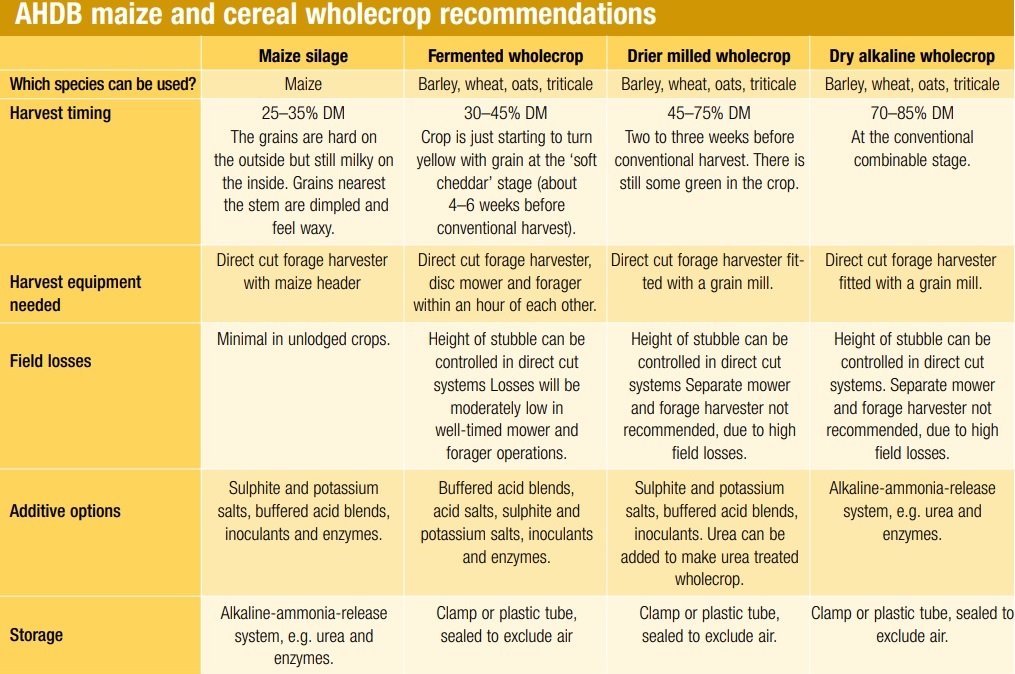
Source: AHDB
This article was taken from the latest issue of CPM. For more articles like this, subscribe here.

